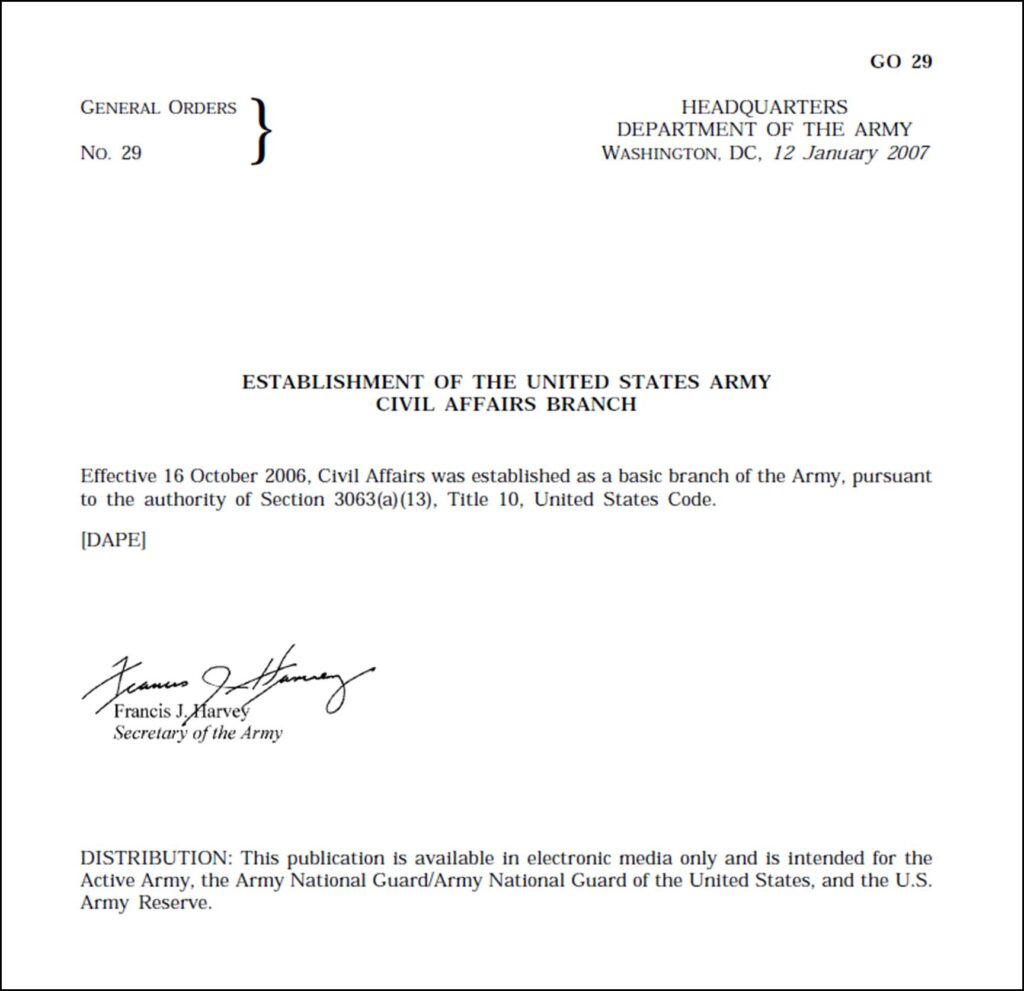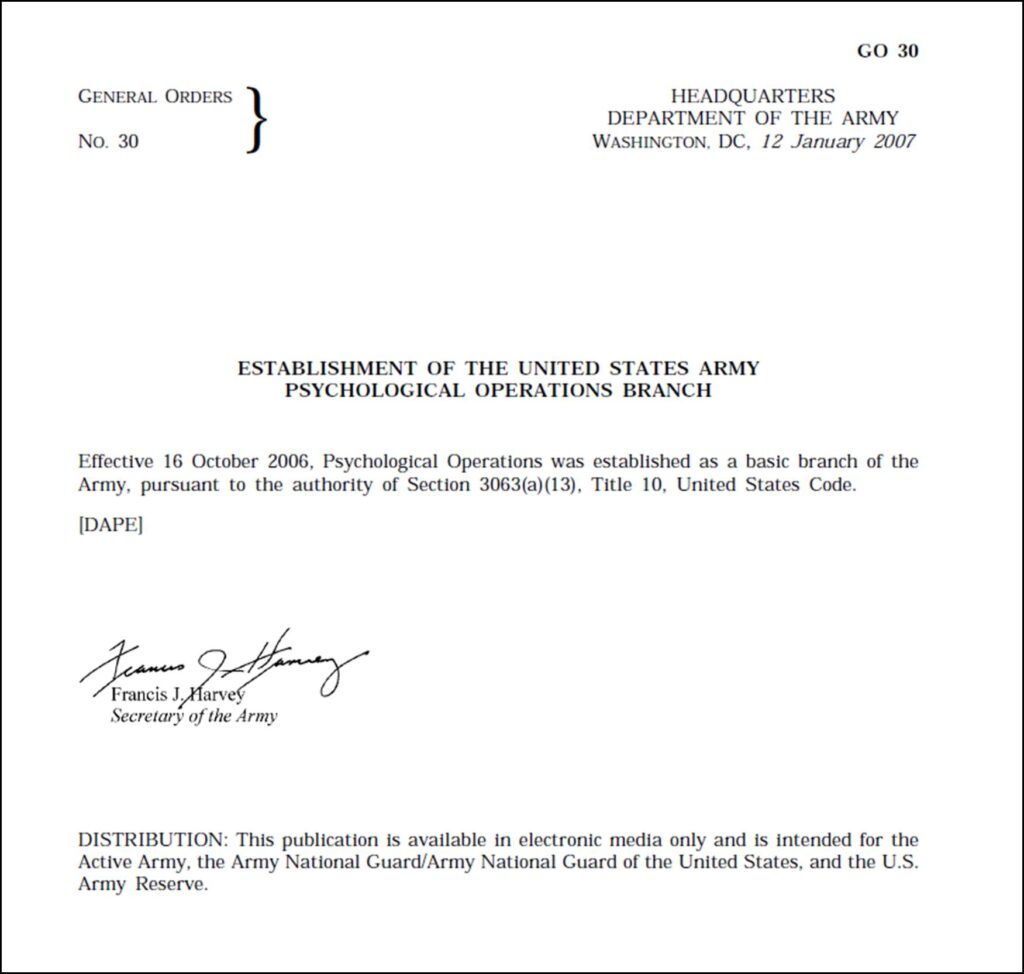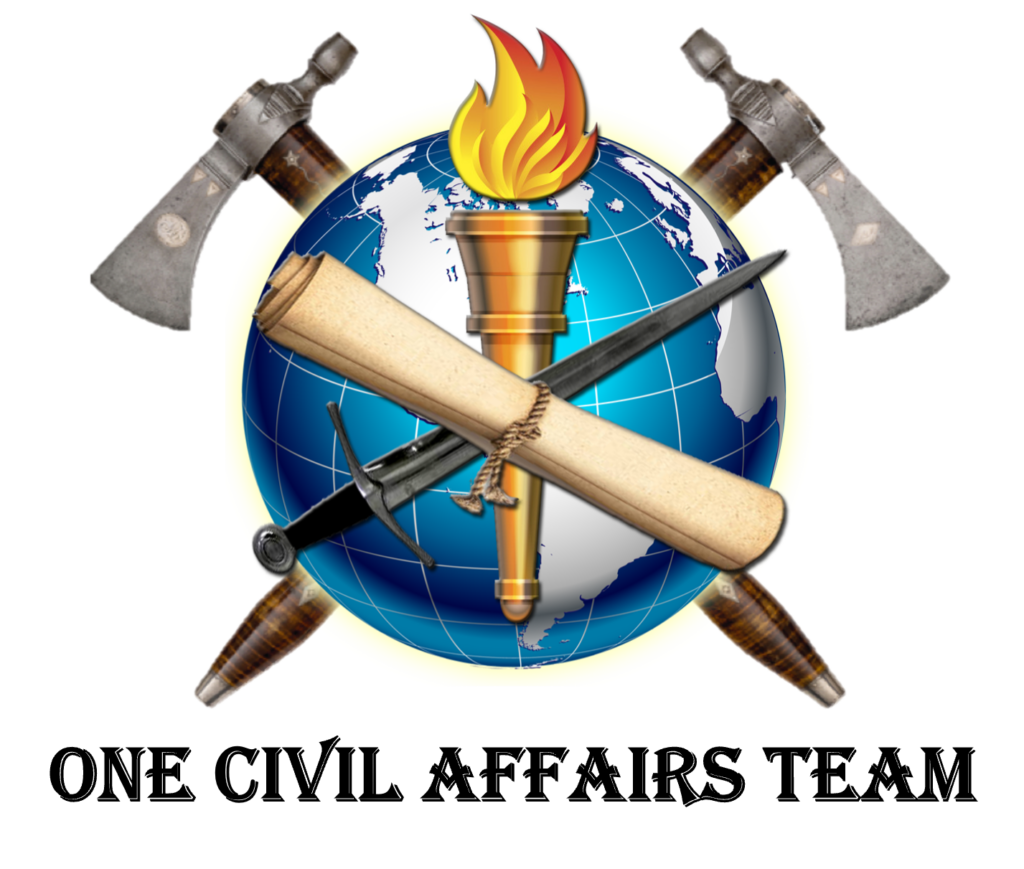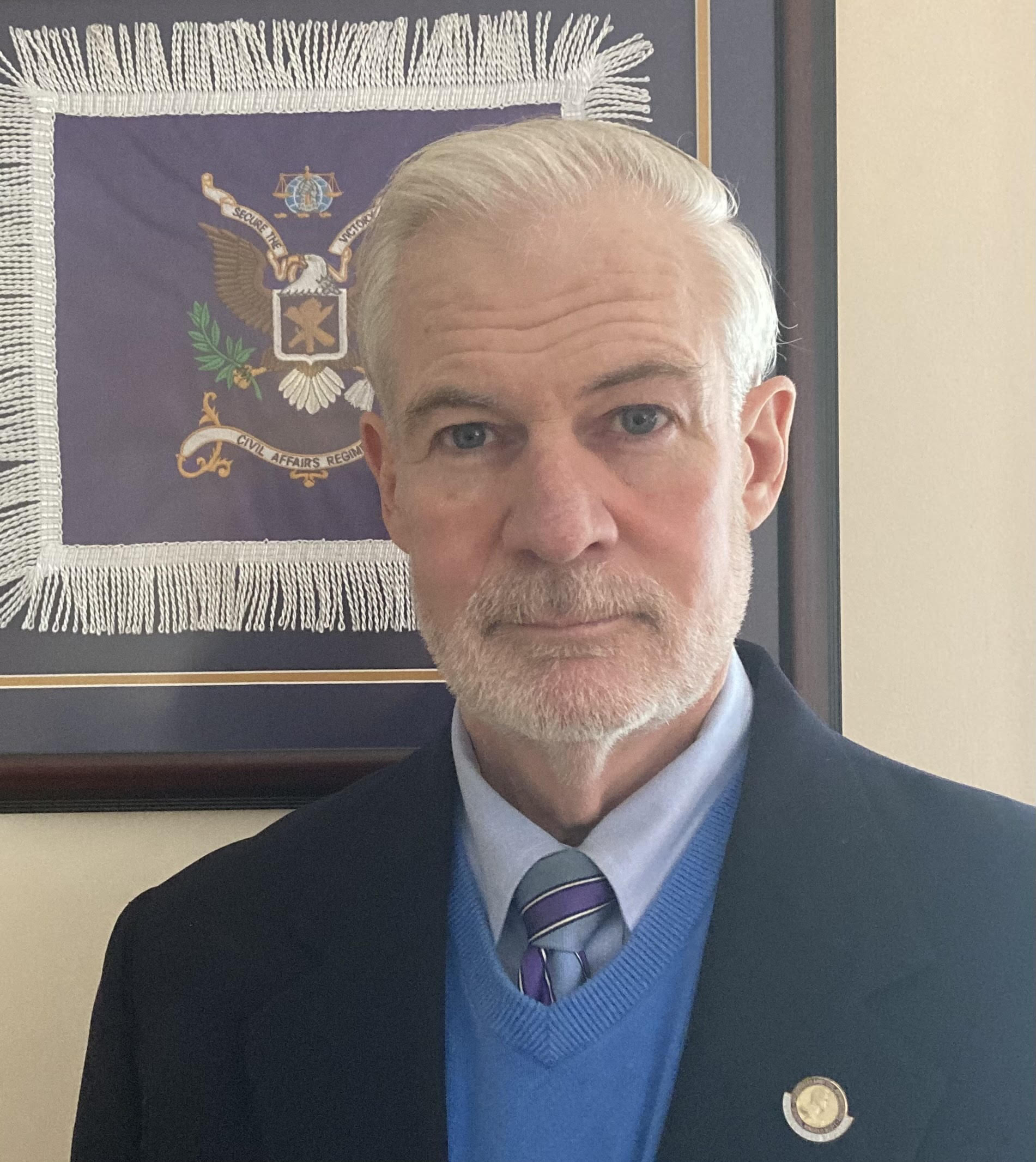8-minute read
A loaded question.
This can be a sensitive subject for some. Being a member of special operations forces (SOF) is a source of immense pride. Yet, while my answer to this question does not change the fact that they are SOF, I’ve seen people get quite emotional when I didn’t give the answer they wanted to hear.
For example, eight years ago, in late August 2017, when I was serving as both the Director of the Civil Affairs Force Modernization Directorate at the U.S. Army John F. Kennedy Special Warfare Center and School (USAJFKSWCS) and the Honorary Colonel of the Regiment for the Civil Affairs Corps, I was asked to participate in an engagement with the members of the Combined Arms Center Special Operations Directorate (CAC-SOD) Working Group. CAC-SOD consisted of special operations liaison officers and NCOs who were assigned to USAJFKSWCS with duty at the Combined Arms Center at Fort Leavenworth, KS, and each of the U.S. Army Training and Doctrine Command’s (TRADOC’s) centers of excellence.
I don’t remember exactly how the topic came up, but at some point, I dared to say that civil affairs was not a SOF branch. The director of CAC-SOD, a CA colonel who had previously commanded the CA training battalion at USAJFKSWCS, nearly jumped out of his seat, insisting that it was. I offered a few reasons to support my point, but he still wasn’t convinced. His main argument was that it must be a special operations branch because CA Soldiers were trained at USAJFKSWCS.
A simple answer consisting of three parts.
The reasons why civil affairs is not a SOF branch are pretty simple:
- The Army has “basic branches,” not “SOF branches.”
- According to federal law, units, not branches, are designated as SOF by two specific Department of Defense (DoD) plans and by Secretary of Defense (SECDEF) action. Some CA units are designated as SOF, while most are not.
- CA Soldiers are regarded as “SOF” because they are assigned to billets in special operations units. In fact, all members of a special operations unit, regardless of their area of concentration (AOC) or military occupational specialty (MOS), are considered SOF Soldiers.
The Army does not have “SOF branches.”
As we noted in CATR #10, AR 5-22, The Army Force Modernization Proponent System, identifies the CG of the U.S. Army Special Operations Center of Excellence (SOCoE) at USAJFKSWCS as the CA branch proponent. Table 3-2 of that AR also identifies the SOCoE CG as the branch proponent for the Psychological Operations (PO or PSYOP) and Special Forces (SF) branches. The branch proponent is “responsible for [doctrine, organization, training, materiel, leadership and education, personnel, facilities, and policy] DOTMLPF-P and supports materiel capability development within their designated branch.”
Below are images of the three Department of the Army General Orders (AGOs) that established the SF branch and the Regular Army CA and PSYOP branches. (Recall that CA had already been a branch in the U.S. Army Reserve (USAR) since 1955.) In each case, the branch was “established as a basic branch of the Army.” Also, although trained at USAJFKSWCS, neither AGO mentions Army Special Operations Forces (ARSOF).



Paragraph 2-19 of AR 5-22 contains a caveat that the SOCoE CG has primary duties and responsibilities for the doctrine, training, leader development, and personnel of these three branches, while the Force Modernization Center at the U.S. Army Special Operations Command (USASOC) has primary duties and responsibilities for their force modernization (i.e., organization, materiel, facilities, and policy). It also points out that these organizations execute those responsibilities for the conventional side of the CA and PSYOP branches.
In other words, USAJFKSWCS/SOCoE provides branch-specific doctrine, individual and collective training guidance, and trained and educated 38-series (CA), 37-series (PSYOP), and 18-series (SF) Soldiers to USASOC and the Army. USASOC and the Army, in turn, assign these trained and educated Soldiers to fill authorized 38-, 37-, and 18-series positions in Army conventional and special operations units.
Units, not branches, are designated as SOF.
Paragraph (j) of Title 10 U.S. Code § 167 – Unified combatant command for special operations forces, which established the United States Special Operations Command (USSOCOM) in 1987, defines what constitutes SOF. Forces “identified as core forces or as augmenting forces in the Joint Chiefs of Staff Joint Strategic Capabilities Plan, Annex E, dated December 17, 1985…(or) described in the Terms of Reference and Conceptual Operations Plan for the Joint Special Operations Command, as in effect on April 1, 1986” are automatically SOF. Forces may also be “designated as special operations forces by the Secretary of Defense.”
At one time, when the totality of U.S. Army CA forces consisted of the 96th Civil Affairs Battalion (Airborne) in the active component and an array of USAR CA units assigned to the U.S. Army Civil Affairs and Psychological Operations Command (Airborne) (USACAPOC(A)) under USASOC, all were considered SOF. As shown in the image of the memo below, SECDEF Les Aspin designated “all … Civil Affairs forces currently assigned to the United States Special Operations Command as special operations forces (SOF) for all purposes of Section 167” in 1993.

However, almost three years after SECDEF Donald Rumsfeld asked “whether or not all the Civil Affairs ought to be in SOF,” he directed that all USAR CA forces be reassigned from USSOCOM (under USASOC) to the United States Joint Forces Command (under U.S. Army Reserve Command, or USARC). In November 2006, DEPSECDEF Gordon England signed the memo directing that, “Effective immediately upon reassignment, the Army Reserve Civil Affairs … forces will no longer be designated a Special Operations Force (SOF) for the purposes of Section 167, Title 10, United States Code.”

Today, the 95th Civil Affairs Brigade (Special Operations)(Airborne) ((SO)(A)) headquarters and five CA battalions (SO)(A) assigned to the 1st Special Forces Command (Airborne) are designated as SOF. As outlined in COTR #10, the number of CA Soldiers assigned to these active force units, along with instructor positions at USAJFKSWCS and AC staff positions across SOF headquarters, Regular Army conventional formations, and joint headquarters, totals 1,500. The rest of the Army’s CA capacity includes four CA Commands, eight CA brigades, and 28 CA battalions in the USAR, as well as instructor positions at USAJFKSWCS and The Army School System and staff positions throughout Regular Army and Reserve Component conventional formations, totaling 5,300 Soldiers. They are not designated as SOF. Since 78% of the branch is not SOF, claiming CA is a SOF branch makes no sense.
CA Soldiers are considered “SOF” by virtue of assignment.
What truly distinguishes a SOF Soldier is assignment to a special operations unit, training to SOF standards, and conducting special operations activities that support special operations, as outlined in 10 USC 167. For a SOF CA unit, that includes the human resources personnel in the S-1 shop, the intelligence Soldiers in the S-2 shop, the logisticians in the S-4 shop, the signaleers in the S-6 shop, and all other low-density MOSs.
Five days after I reported to the 1st Ranger Battalion at Hunter Army Airfield in Savannah, Georgia, I participated in my first battalion training exercise. In December 1986, we jumped into Holland Drop Zone at Fort Bragg, North Carolina, and were transported to a nearby training facility. For the next few weeks, my fire support team slept on cots in a motor bay. Most of our training took place at night, involving helicopters from the 160th Special Operations Aviation Regiment (SOAR), sliding down ropes, and using lasers to designate targets. I finally asked one of my teammates, “What is this? We didn’t do this in Ranger School.” He responded, “Oh, this is special operations. You’re a SOF guy now.”
When I worked at the Pentagon from June 2003 to June 2005, I was one of only two CA officers on the Army Staff. I held a position in a USASOC billet assigned to the Special Operations Directorate (then known as MOSO-SOD, now DAMO-SOD) and was detailed to the Force Management Directorate (DAMO-FM) as the SOF Organizational Integrator (OI). During my first briefing to the Department of the Army G-3/5/7, a three-star general, on a CA topic, he interrupted me and said, “You know I’m SOF, right?” I looked at the large model of a black AH-6 Little Bird helicopter, of which I was thoroughly familiar, hanging from the ceiling of his office, and responded, “Yes, sir, I do.” As commander of the 160th SOAR earlier in his career, he was asserting his status as a SOF-for-life Soldier.
Like that general and me, members of USAR CA units from 3 March 1993 to 1 October 2006, and anyone else who successfully served in a special operations unit for any length of time, should be proud of their status as a SOF Soldier.
Question for our teammates: If you’re not satisfied with this answer, how would you respond to the question?
Responses from Teammates:
19 Sep 2025, MAJ John McElligott: Thank you for outlining the history and contemporary context for whether some CA forces are SOF or not. Do you think the SOF CA units today need to remain SOF to accomplish their assigned missions? Could you describe for readers the authorities that SOF status can unlocks for those CA units?
29 Sep 2025, COL(R) Doug Hurst: I enjoyed this article for settling the age-old argument among the CA community…I have always said when asked that I was SOF adjacent. Not SOF, but they were always close by.
Send a note to the Civil Affairs Team Room.
Subscribe for updates to the Civil Affairs Team Room Blog

